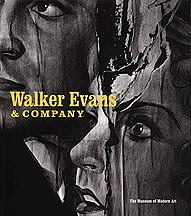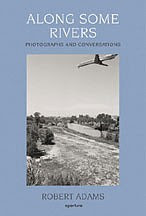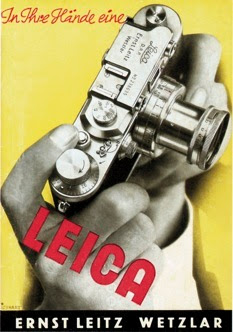
1. Stephen Shore's book Looking at Photographs. Really, it's probably very good for teaching Photographic Art 101, but it does spend a lot of time stating the obvious. It used to cost a fortune used and so when the new edition was released I ordered a copy. Luckily Amazon has an excellent return service on books and I sent it back for a refund instead. Save you money and buy a copy of his book The Gardens at Giverny - you will get much more from it.

2. Tod Papageorge’s essay "Walker Evans and Robert Frank: An Essay on Influence". This has become all the rage recently with a transcript of the original essay being made available online. I have had a copy of the original book years, which has the added advantage of including all the photographs that are referenced. But really, it's not his best work, rather convoluted, forced in places and somewhat muddled. Geoff Dyer does a much better job in The Ongoing Moment of talking about Evan's, Frank, Friedlander and a host of others and their interrelationships and influences - both visual and intellectual. And the book Walker Evans and Company does a better job of illustrating these influences and examining them in great depth.

3. The Education of a Photographer by Charles Traub has been much lauded lately, especially his "Do's and Dont's"

Do something old in a new way
Do something new in an old way
Do something new in a new way, Whatever works . . . works
Do it sharp, if you can’t, call it art
Do it in the computer—if it can be done there
Do fifty of them—you will definitely get a show
Do it big, if you cant do it big, do it red
If all else fails turn it upside down, if it looks good it might work... etc etc
Don’t do it about yourself—or your friend—or your family
Don’t dare photograph yourself nude
Don’t look at old family albums
Don’t hand color it
Don’t write on it... etc etc blah blah blah
Now, either Traub has done this totally tongue in cheek (which I suspect - in part because he completely contradicts himself more than once) in which case people seem to have been taking him far too seriously - or else he's full of it (entirely possible, being an art professor). Either way, I was seduced by a review a while back and ordered the book. The selection of essays, while they sounded promising, turned out to be rather pedestrian on the whole, and not awfully inspiring (which I assumed was part of the raison d'etre for the book?). Anyway, there are some much better collections of essays and extracts out there - some long out of print but quite cheap - such as Photography: Essay & Images edited by Beaumont Newhall, or Photographers on Photography edited by Nathan Lyons among others . Hunt them out - they are more rewarding. Or read any one of Robert Adam's short books on photography - especially the conversations in the recent Along Some Rivers

4. This is a twofer - two recent novels about photographers (I'm try to think here - are there any really good novels about photographers/photography? There are a couple of semi-decent ones such as Afterimage, loosely based on Julia Margaret Cameron. The Mercury Visions of Louis Daguerre was definitely rather odd... as was Consolation by Michael Redhill (the 18th Century part was good, the contemporary part just didn't hold water). But no really good ones I can think of - say something contemporary that would stand up alongside a novel by Banville or Murakami, or McEwan

So, one novel about Edward Curtis and one about Edward Steichen.

The Last Summer of the World by Emily Mitchell is about Steichen in the early 20th Century. However, there are far better novels about the first world war (such as Pat Barker's Regeneration trilogy or No Man’s Land by Kevin Major), about romance and about love and loss in the First World War. Or pick up a Steichen bio instead.
The second novel is The Shadow Catcher by Marianne Wiggins. Previously she’s actually written a quite good novel about war photography, but this one dragged me down after a couple of chapters or so (although I eventually persisted to the end). It was described as Wiggins taking "a magnificently Sebald-like approach to fictionalizing the life of photographer Edward Sheriff Curtis" which frankly was a load of old codswallop - as well as an insult to Max Sebald.
(Guy Vanderhaeghe does the combining of two stories in two time periods in the West + Hollywood far far better and much more convincingly in The Englishman’s Boy - soon to be a movie/TV movie? with Bob Hoskins)
5. Digital black and white
I'm not talking the analogue/digital debate (although that's also not worth wasting your time on), but rather digital "colour" images converted to black and white. They are so smooth, “perfect” and characterless. They also tend to look like everything has been photographed on Agfa Scala slide film (fine every now and then - but not all the time).
I've been following Doug Stockdales blog - it's quite fun and interesting, but the digital B&W images are driving me nuts – not their content, but their “look”. But it can also be seen by the bucket-load on Flickr:

One of the wonderful things about black and white photography - even when it's scanned and printed digitally - is the endless permutations of film and developer (and I know you can get Tri-X and HP5 Photoshop filters - still doesn't mean the end result looks like Tr-X or HP5 though - I haven't tested one that really does the job yet... along with the whole bunch of tools in PS CS3... ). Tri-X in Rodinal, Efke in Pyrocat HD, HP5 in DD-X, Tri-X in D23 and on it goes. Each one has it's own distinct character, look and feel. Add in expansion and contraction development (love it or hate it) and you multiply that again. The majority of digital "B&W" that I see just doesn’t come anywhere close to having these characteristics. It's simply homogenized. Which, on the whole, is rather different from most of the colour work - colour digital work can sing (as can analogue/digital hybrid colour).
Though probably the biggest single reason that so many converted colour images look crappy in greyscale is nothing to do with technique, but rather vision - on the whole, good black and white pictures simply aren't colour photographs with the colour removed.
Now maybe this will all change, but as it stands right now this is Greyscale photography, not black and white.
For Black and White photography, get a real camera and real film (scan it if you don't like darkroom chemicals) - a Leica (All Praise Ernst Leitz in the current New Yorker), a now cheap used Pentax 67 or similar, or a Linhof or Toyo - or a nice wooden thing from China and a box of Tri-X or HP5.

6. This one's the keeper - The Day to Day Life of Albert Hastings - a wonderful little book at a bargain price – but more on it tomorrow....







9 comments:
Was going to look at the Traub and the novel about Steichen. Thank you, you've saved me the time.
I also completely agree about the digital greyscale.
well, the Traub I actually bought... it's not THAT bad, but the selection of essays and small articles isn't as good as some other's I've read.
The Steichen novel I got from the library, so what the heck. I did read it - again, okaaay - but nothing special, and I'm glad I didn't buy it...
While I agree with the Wiggins, I disagree whole heartily with Digital Black and White. I think the problem is that there is a lot of bad technique. You can't just convert to grey scale or use a software filter and then quit. That is like printing in the dark room without dodging, burning, bleaching or toning. I think you absolutely can print amazing digital black and white prints, it takes a lot of work but it is very possible. I also think it helps if you learned on film first.
good mini reviews- thanks
I especially agree with you on Traub, and Shore (although with Shore, I bought it anyway bc I wanted some of the plates he used as examples)
The Ongoing Moment has influenced me more than any other book I have read in years..
cheers
db
Thanks, we feel the same, did get some interesting thoughts from the Education book, I'm still a big fan of Sontag, and John Berger.
Why can't there be more "moderately
priced" books the quality of an "Albert Hastings?"
Not exactly a novel, but I did find ShutterBabe a good read some time back.
I'm sure there is some good B&W digital being made somewhere, but most does, in fact, appear to look like badly reproduced Lenswork facsimiles.
Tim:
You might get a kick out of Kathryn Harrison's Exposure. It's trashy but amusing.
Cheers,
G.
Tim, just read your update about the grayscale vs "black and white" for digital color images. Keeping an open mind, I'm going to compare some of my Tri-X to digital prints, Color digital converted to black & white (I don't convert to grayscale in my workflow process, but I get your point) and pull up some old Seagull Oriental prints. I'm just trying to understand what it is you see that apparently I don't. I do remember the old days in which the prusit of grainless images was a holy grail, e.g. Panatomic X in Microdal (think I have the spelling right) or 8x10" contact prints.
On Wiggins Shadow Catcher:
Wiggins demystifies the Curtis legacy in her own entertaining and masterful way in this fantastic book. It is a really good read for all. I recommend it wholeheartedly.
The real ES Curtis legacy exists in a world today of postmortems using the eyes of a century of technology and ethnological correctness.
Edward S. Curtis, legendary photographer, and no Photoshop?
Curtis didn't use a Canon or Nikon SLR, but made his images with a 6 1/2 x 8 1/2 Premo reversible back camera. It had a 22" bellows, and a ground glass back. It took at least 15 minutes to set up a picture, and his fastest shutter speed was 1/100th of a second. He didn't have a "healing" or "cloning" tool, sharpening, curves, or levels... neither Photoshop nor the computer, or the CCD had been invented yet. My God! How did he do it?
For as much criticism as this man has received in the last century, it leads one to think that perhaps he did create a little magic. Perhaps he was on to something in the photographic world. He helped bring photography into line with the great masters of the paint brush, as the age of photography was just beginning.
The beginnings of the modern west certainly resonate in the works of Edward S. Curtis. His photos were made at a time when Indians already driven from their lands were being shorn from their cultures.
This history is very apparent in a film on Curtis's works, The Indian Picture Opera, (Amazon, dvd). In it, his images are explained in his own words. It's a re-creation of a 1911 E.S. Curtis lecture and slide show.
The film goes way beyond the images in showing how the west was transformed. It was a last grasp at recapturing was he called the "vanishing race".
Did he romanticize Indians and the west? Yes, the same way American culture romanticizes everything today as well. We seem to love the world of pop-culture, where everything fits into a nutshell. This is part of the markings of American media.
A journey into the past is always enlightening. Even though photography has been reinvented by digital, where we use layers and effects, remember... it's golden age was a century ago.
Post a Comment